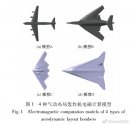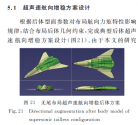Here:this is serious information. can i get the link of this account bro
But once again, I am highly doubtful of the supersonic capability claim on the H-20. Even without the complex flight control issues associated with flying wing aircrafts at supersonic speeds, the amount of fuel required for maintaining long duration supersonic flight would have detrimental impact on the payload capacity and range of the H-20, which would be unfavorable if the H-20 is to take on the missile truck role in the PLAAF.
Unless... the team in Xi'an is somehow able to merge the stealth capability of model C and supersonic capability of model D into one H-20 airframe, all while not sacrificing much from both models:

I have no idea when did I got this diagram, but AFAIK I got this diagram from somewhere in this forum.
And again, my point on the stealth + supersonic capabilities on the H-20 should be counted as pure speculation.
Last edited:

